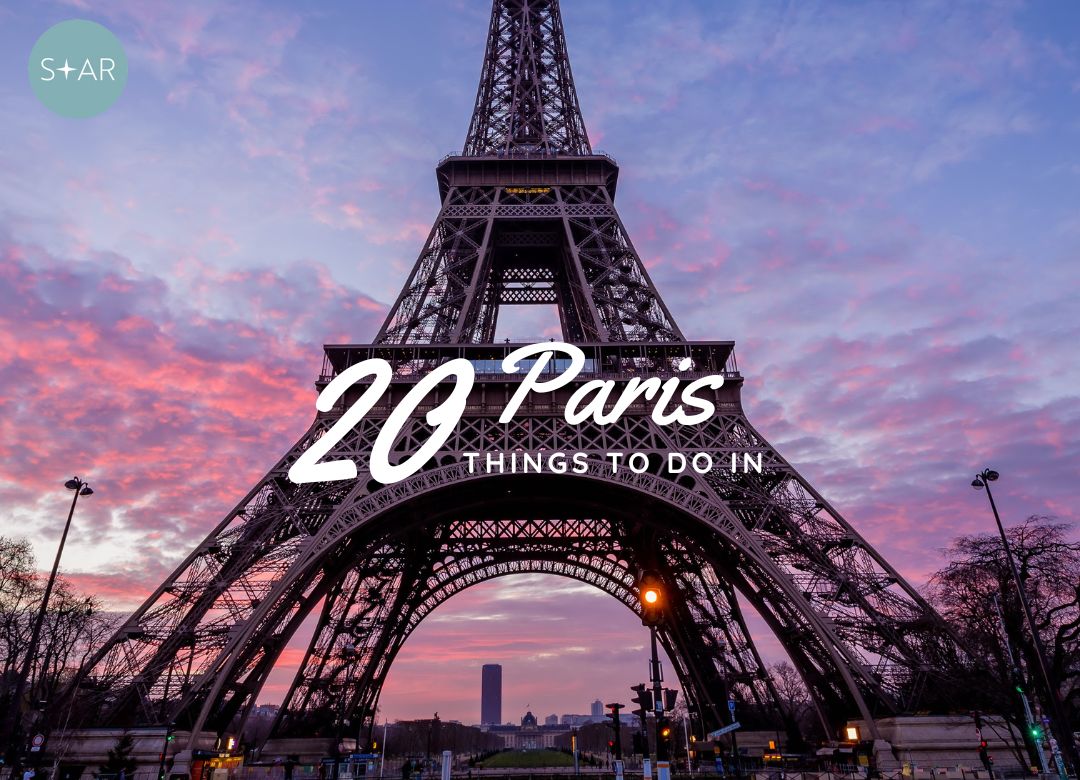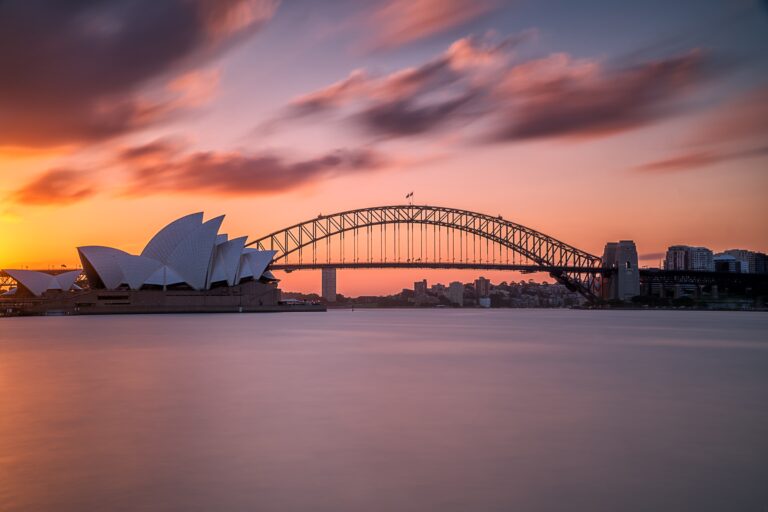Bonjour, travelers! Paris, the City of Light, is a destination that needs no introduction. With its rich history, breathtaking architecture, world-class cuisine, and vibrant culture, Paris offers an endless array of experiences for every type of traveler. Whether you’re a first-time visitor or a seasoned Parisian explorer, our comprehensive guide will help you discover the 20 best things to do in Paris. Let’s dive into the magic of Paris with Star Vacations!
1. Eiffel Tower

No trip to Paris is complete without visiting the iconic Eiffel Tower. This world-renowned landmark, designed by Gustave Eiffel, was completed in 1889 for the World’s Fair. Standing at 324 meters tall, the Eiffel Tower offers breathtaking views of Paris from its three levels.
- First Level: The first level features a glass floor, a unique experience that allows you to look straight down. It also houses a museum, gift shops, and the 58 Tour Eiffel restaurant, which offers a delightful dining experience with a view.
- Second Level: The second level is perfect for capturing panoramic photos of the city. Here, you’ll find the famous Jules Verne restaurant, where you can indulge in gourmet French cuisine while enjoying an incredible view.
- Top Level: The top level of the Eiffel Tower, accessible by elevator, provides a spectacular 360-degree view of Paris. On a clear day, you can see for miles, spotting landmarks like the Arc de Triomphe, the Louvre, and Sacré-Cœur.
For a romantic experience, visit the Eiffel Tower at night when it’s beautifully illuminated, and every hour, on the hour, it sparkles with thousands of lights.
2. Louvre Museum
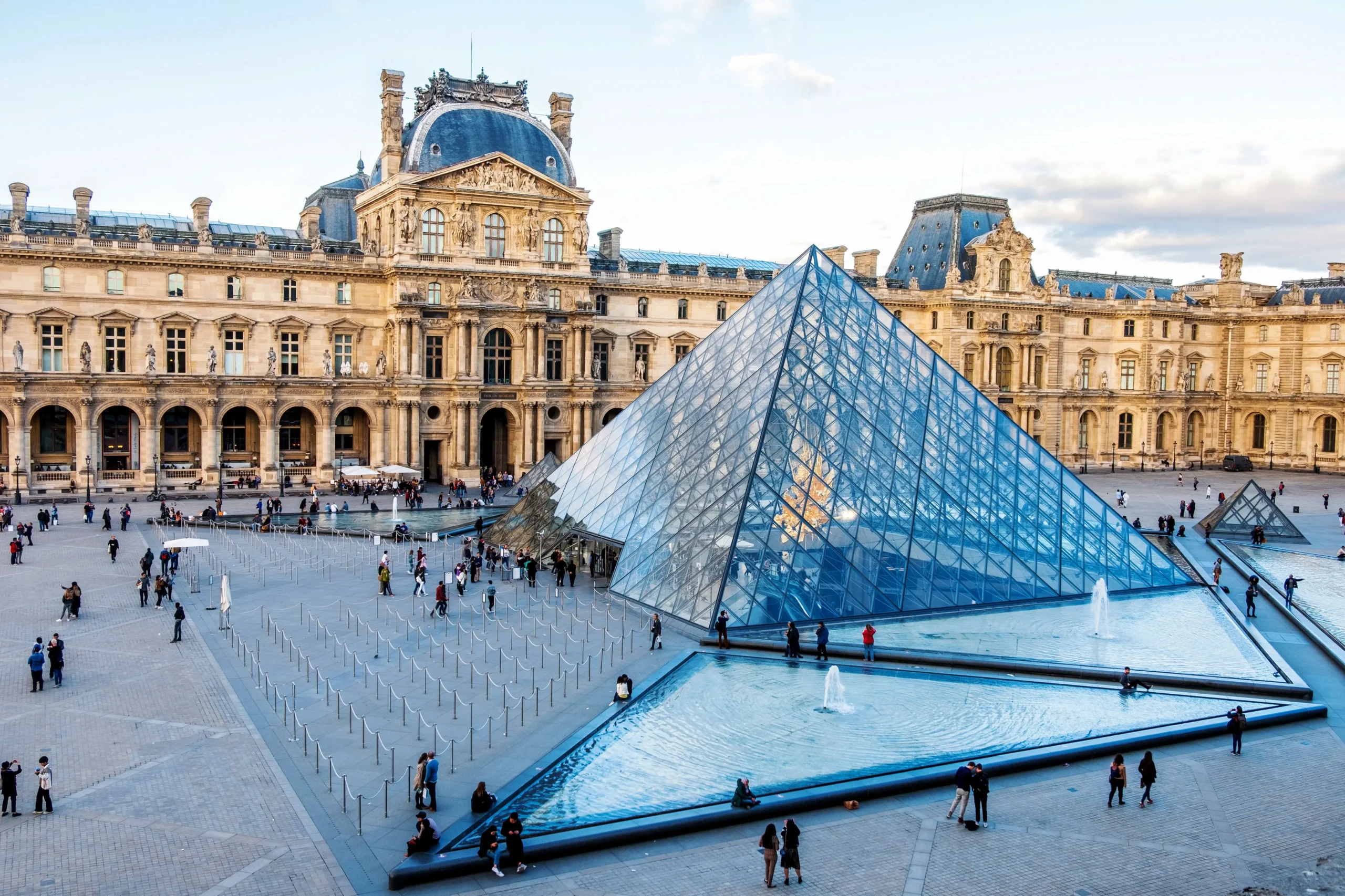
Home to thousands of artworks, including the Mona Lisa and the Venus de Milo, the Louvre is a must-visit for art lovers and history enthusiasts alike. Located on the right bank of the Seine River, the Louvre was originally a royal palace before becoming one of the world’s largest and most visited museums.
- Mona Lisa: Leonardo da Vinci’s Mona Lisa is the Louvre’s most famous painting. Despite its small size, the portrait’s enigmatic smile attracts millions of visitors each year. Arrive early to avoid the crowds and get a closer look.
- Venus de Milo: This ancient Greek statue, believed to represent Aphrodite, the goddess of love, is another highlight of the Louvre. Its exquisite craftsmanship and historical significance make it a must-see.
- Winged Victory of Samothrace: This dramatic marble statue of Nike, the Greek goddess of victory, is displayed at the top of the Daru staircase. Its dynamic pose and intricate detail are truly impressive.
- The Louvre Pyramid: The glass pyramid, designed by architect I. M. Pei, serves as the museum’s main entrance and has become an iconic symbol of modern Paris. The contrast between the pyramid’s contemporary design and the historic palace is a sight to behold.
Plan your visit in advance, as the Louvre’s vast collection can be overwhelming. Guided tours are available, offering insights into the museum’s most significant pieces and history.
3. Notre-Dame Cathedral
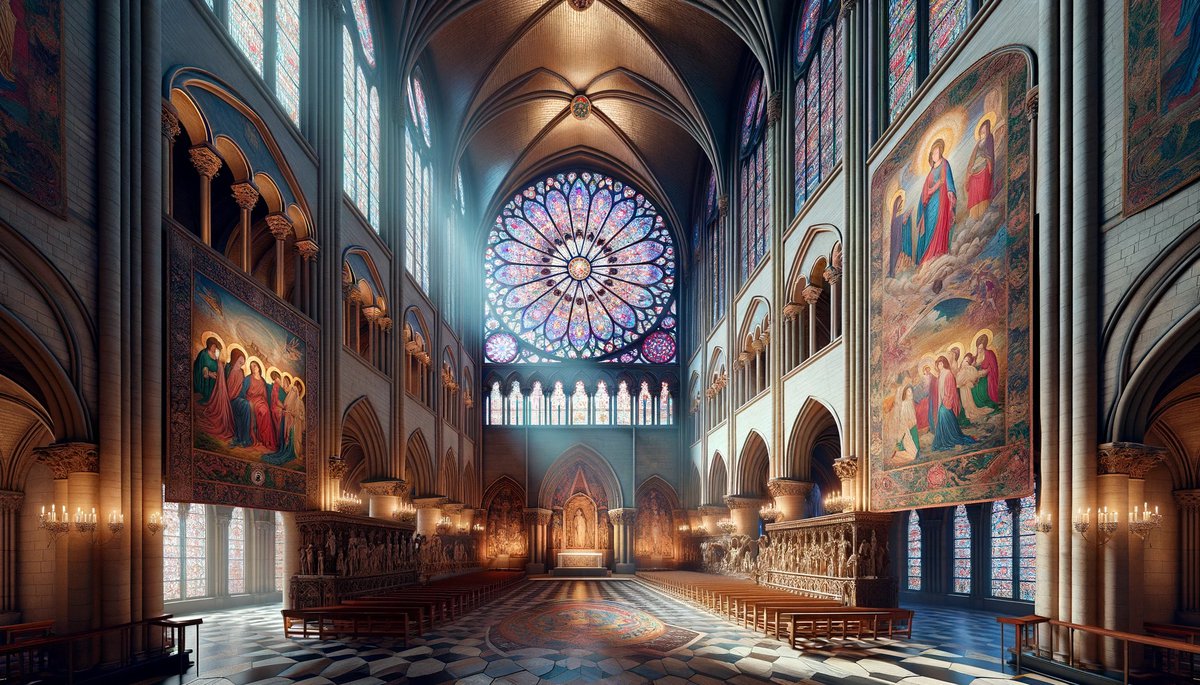
Marvel at the Gothic architecture of Notre Dame Cathedral, one of the most famous and beautiful cathedrals in the world. Situated on the Île de la Cité, this masterpiece of French Gothic architecture was completed in the 14th century.
- Architecture and Interior: Notre Dame’s stunning façade features intricate sculptures and gargoyles. You’ll find magnificent stained glass windows, including the renowned Rose Windows, which cast a colorful glow across the cathedral’s interior.
- Climb the Towers: For a breathtaking view of Paris, climb the 387 steps to the top of the towers. From here, you can admire the cityscape and look closer at the cathedral’s famous gargoyles and the massive Emmanuel Bell.
- Crypt and Treasury: Explore the archaeological crypt beneath the cathedral to discover Roman and medieval artifacts. The treasury houses precious religious relics, including the Crown of Thorns.
Although the cathedral was damaged by a fire in 2019, restoration efforts are ongoing. Visitors can still admire its beauty and historical significance from the outside and explore certain parts of the interior.
4. Champs-Élysées and Arc de Triomphe
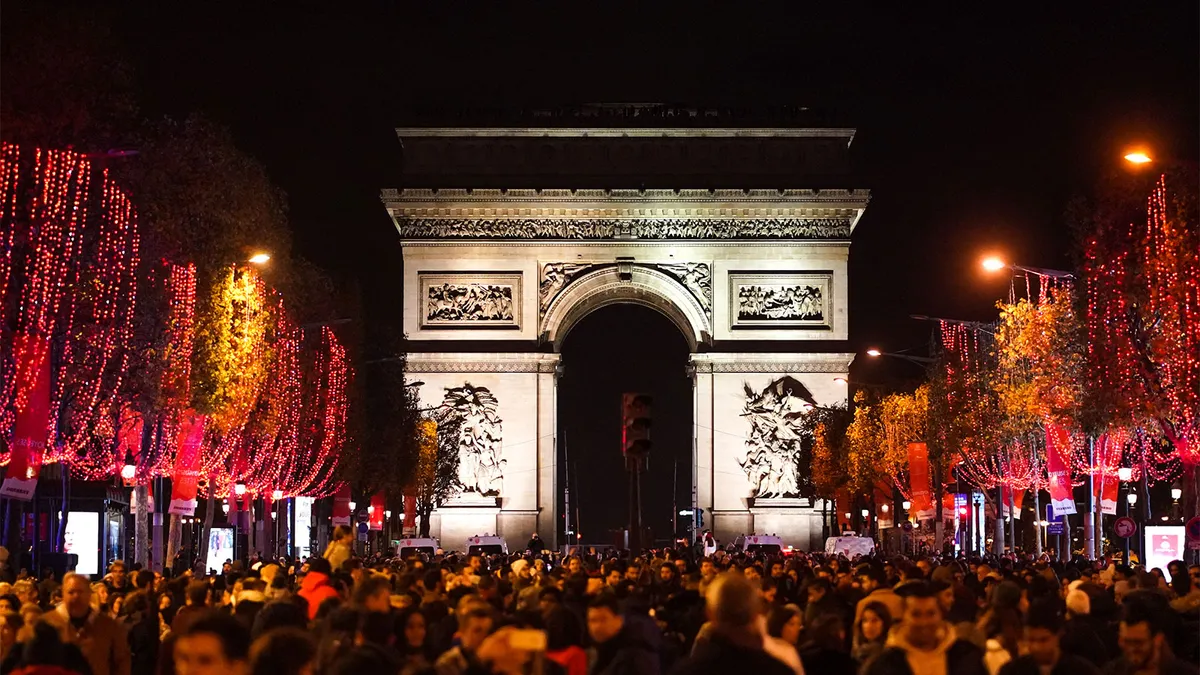
Stroll down the Champs-Élysées, one of the world’s most famous avenues, and visit the Arc de Triomphe, a monument honoring those who fought and died for France during the French Revolutionary and Napoleonic Wars.
- Champs-Élysées: This grand boulevard stretches from the Place de la Concorde to the Arc de Triomphe. Lined with trees, theaters, cafes, and luxury shops, it’s the perfect place for a leisurely walk or a shopping spree. Don’t miss the flagship stores of renowned brands like Louis Vuitton and Cartier.
- Arc de Triomphe: Standing at the western end of the Champs-Élysées, the Arc de Triomphe is a symbol of French national pride. Commissioned by Napoleon in 1806, it honors the French army. Climb to the top of the arch for a panoramic view of Paris, including a spectacular perspective of the Champs-Élysées.
- Tomb of the Unknown Soldier: Beneath the arch lies the Tomb of the Unknown Soldier, dedicated to the unidentified soldiers who died in World War I. The eternal flame is rekindled every evening in a solemn ceremony.
5. Montmartre and Sacré-Cœur
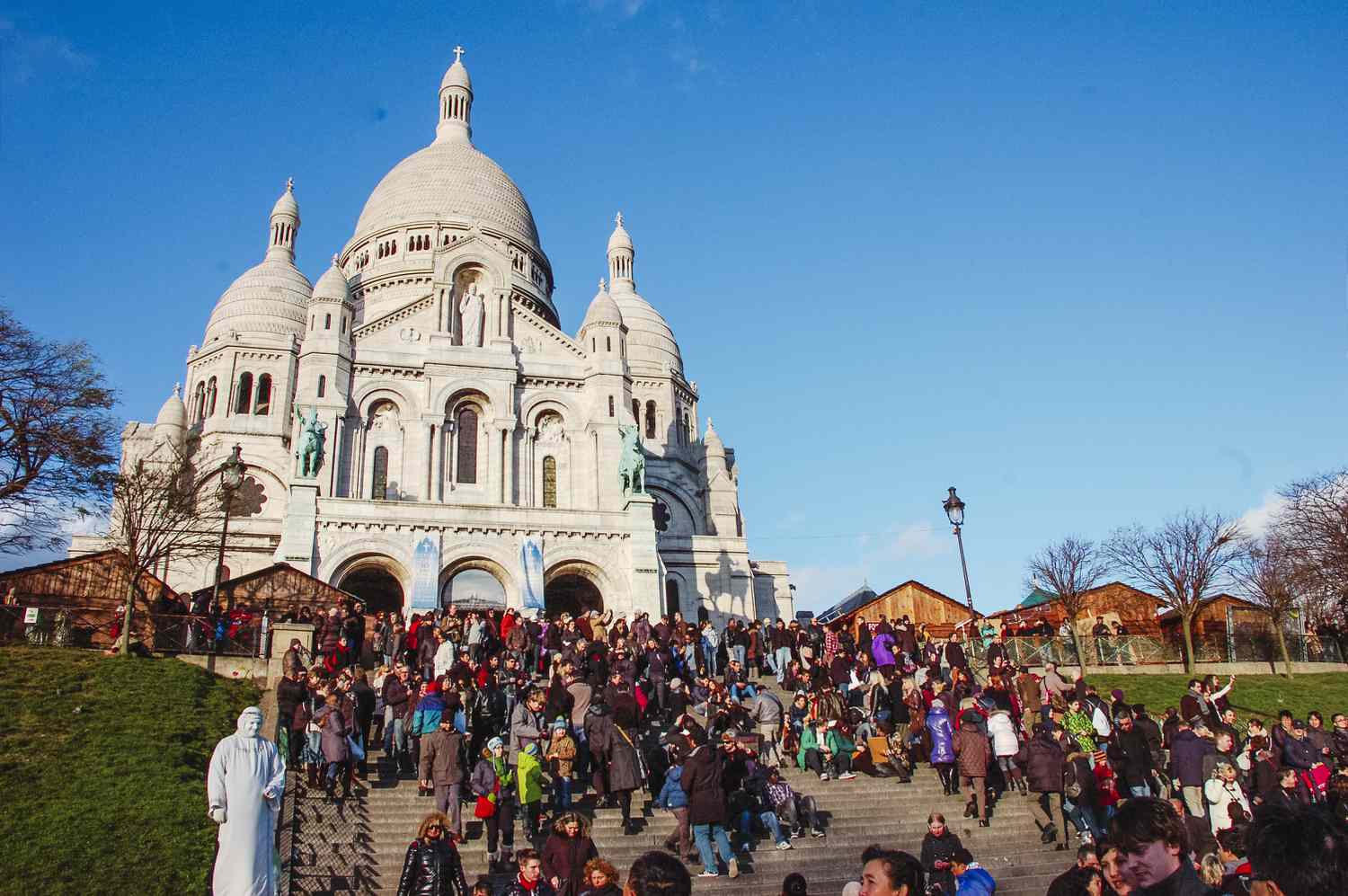
Explore the bohemian district of Montmartre, once home to artists like Picasso and Van Gogh, and visit the Sacré-Cœur Basilica for a breathtaking view of the city.
- Montmartre: This charming hilltop neighborhood is known for its artistic history and vibrant atmosphere. Wander through its narrow, winding streets and discover quaint cafes, art studios, and the lively Place du Tertre, where artists sell their works and offer to paint your portrait.
- Sacré-Cœur Basilica: Perched at the highest point in Paris, the Sacré-Cœur Basilica is a stunning white-domed church that offers panoramic views of the city. The basilica’s interior is equally impressive, featuring a large mosaic in the apse, one of the world’s largest, and beautiful stained glass windows.
- Moulin Rouge: Located at the foot of Montmartre, the Moulin Rouge is the birthplace of the modern can-can dance. Today, it remains a popular entertainment venue, offering spectacular cabaret shows with dazzling costumes and elaborate sets.
Whether you’re exploring the artistic heritage of Montmartre or taking in the serene beauty of Sacré-Cœur, this area of Paris offers a unique and unforgettable experience.
Also Read: 25 Best Things To Do In Athens 2024
6. Seine River Cruise
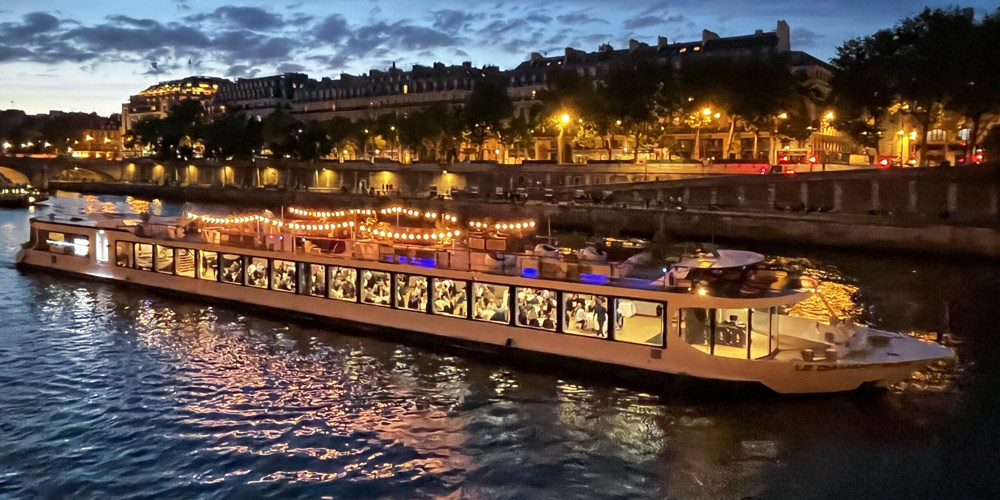
Experience Paris from the water with a Seine River cruise, an essential activity for any visitor. The Seine River flows through the heart of Paris, offering a unique perspective of the city’s most famous landmarks.
- Daytime Cruises: During the day, Seine cruises provide excellent photo opportunities and insightful commentary about the historic and cultural significance of sights such as the Eiffel Tower, Notre-Dame Cathedral, the Louvre, and Musée d’Orsay.
- Nighttime Cruises: For a more romantic and magical experience, opt for an evening cruise. Paris, often called the City of Light, is beautifully illuminated at night. Dinner cruises offer gourmet French cuisine and wine, allowing you to enjoy a meal as you drift past glittering landmarks.
- Specialty Cruises: Some cruises offer themed experiences, such as jazz or wine tasting. Others may provide hop-on-hop-off services, allowing you to explore different parts of the city at your own pace.
A Seine River cruise is a relaxing and picturesque way to see Paris, perfect for first-time visitors and seasoned travelers alike.
7. Palace of Versailles
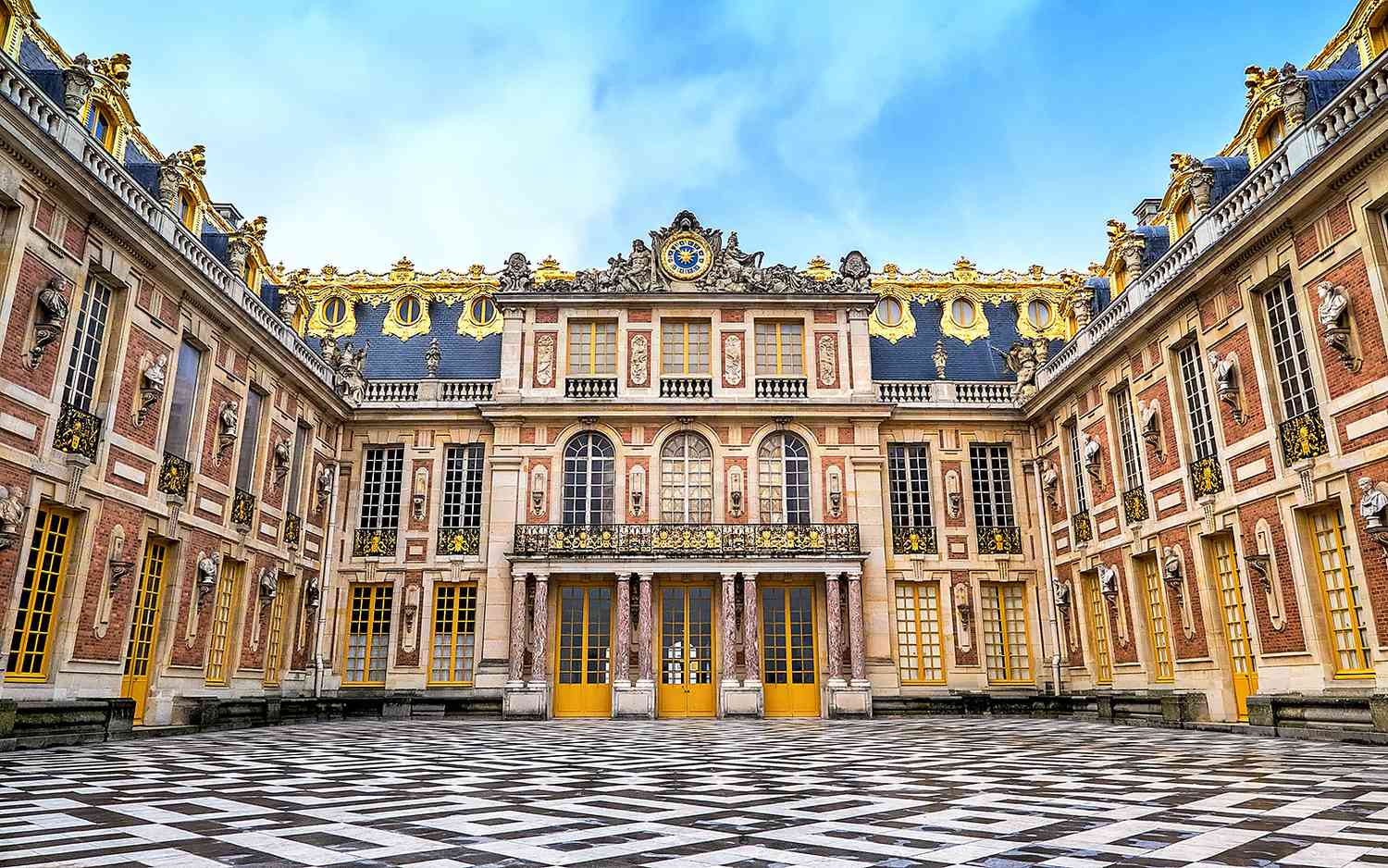
Take a day trip to the opulent Palace of Versailles, located just outside Paris. This UNESCO World Heritage site was the royal residence of Louis XIV, the Sun King, and stands as a symbol of the absolute monarchy of the Ancien Régime.
- The Grand Apartments: Inside the palace, you can explore the lavishly decorated State Apartments, including the King’s and Queen’s apartments. Each room is adorned with stunning artwork, intricate woodwork, and opulent furnishings.
- The Hall of Mirrors: One of the most famous rooms in the palace, the Hall of Mirrors, features 357 mirrors that reflect the light from the arched windows overlooking the gardens. This magnificent gallery was the setting for many important events, including the signing of the Treaty of Versailles in 1919.
- The Gardens: The palace is surrounded by expansive gardens designed by André Le Nôtre. The meticulously manicured grounds include fountains, sculptures, and the beautiful Grand Canal. Visitors can rent bicycles or boats to explore the area or simply enjoy a leisurely stroll.
- The Trianons and Marie Antoinette’s Estate: Within the Versailles estate, you’ll find the Grand Trianon and the Petit Trianon, smaller palaces used for private retreats. Nearby is the rustic Hameau de la Reine, a charming hamlet where Marie Antoinette played at being a shepherdess.
8. Latin Quarter
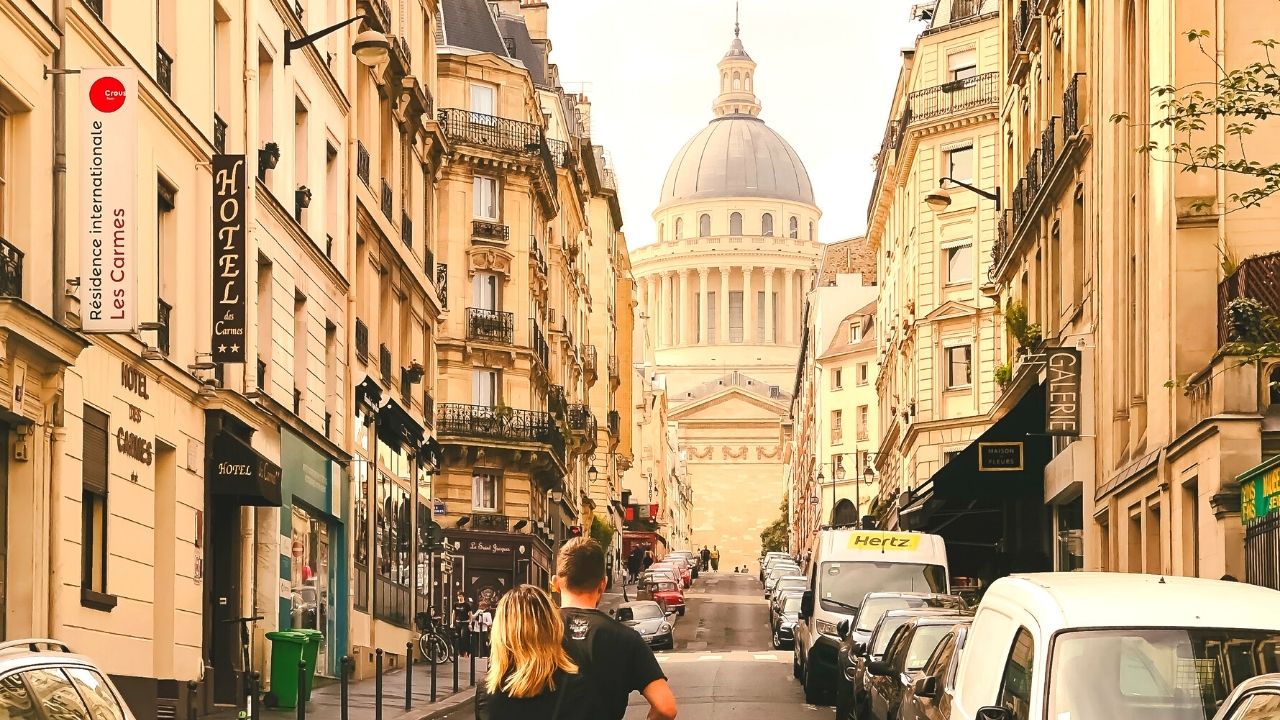
Wander through the Latin Quarter’s narrow streets, filled with bookshops, cafes, and historic landmarks. Located on the left bank of the Seine, this vibrant neighborhood is known for its lively atmosphere and academic heritage.
- Sorbonne University: The Latin Quarter is home to the historic Sorbonne University, one of Europe’s oldest and most prestigious educational institutions. Its presence gives the area a youthful, intellectual vibe.
- Bookshops and Cafes: The Latin Quarter is a paradise for book lovers, with numerous bookshops, including the famous Shakespeare and Company. Cozy cafes line the streets, perfect for sipping coffee and people-watching. Don’t miss the opportunity to try some local delicacies at one of the many bistros or patisseries.
- Pantheon: This neoclassical monument was originally built as a church and now serves as a mausoleum for distinguished French citizens, including Voltaire, Rousseau, Victor Hugo, and Marie Curie. The Pantheon’s impressive dome offers a fantastic view of Paris.
- Rue Mouffetard: One of the oldest streets in Paris, Rue Mouffetard, is a bustling market street where you can find fresh produce, gourmet foods, and a variety of street performers. It’s a great place to soak up the local atmosphere and enjoy a taste of Parisian life.
The Latin Quarter’s blend of history, culture, and vibrant street life makes it a must-visit destination in Paris.
9. Moulin Rouge
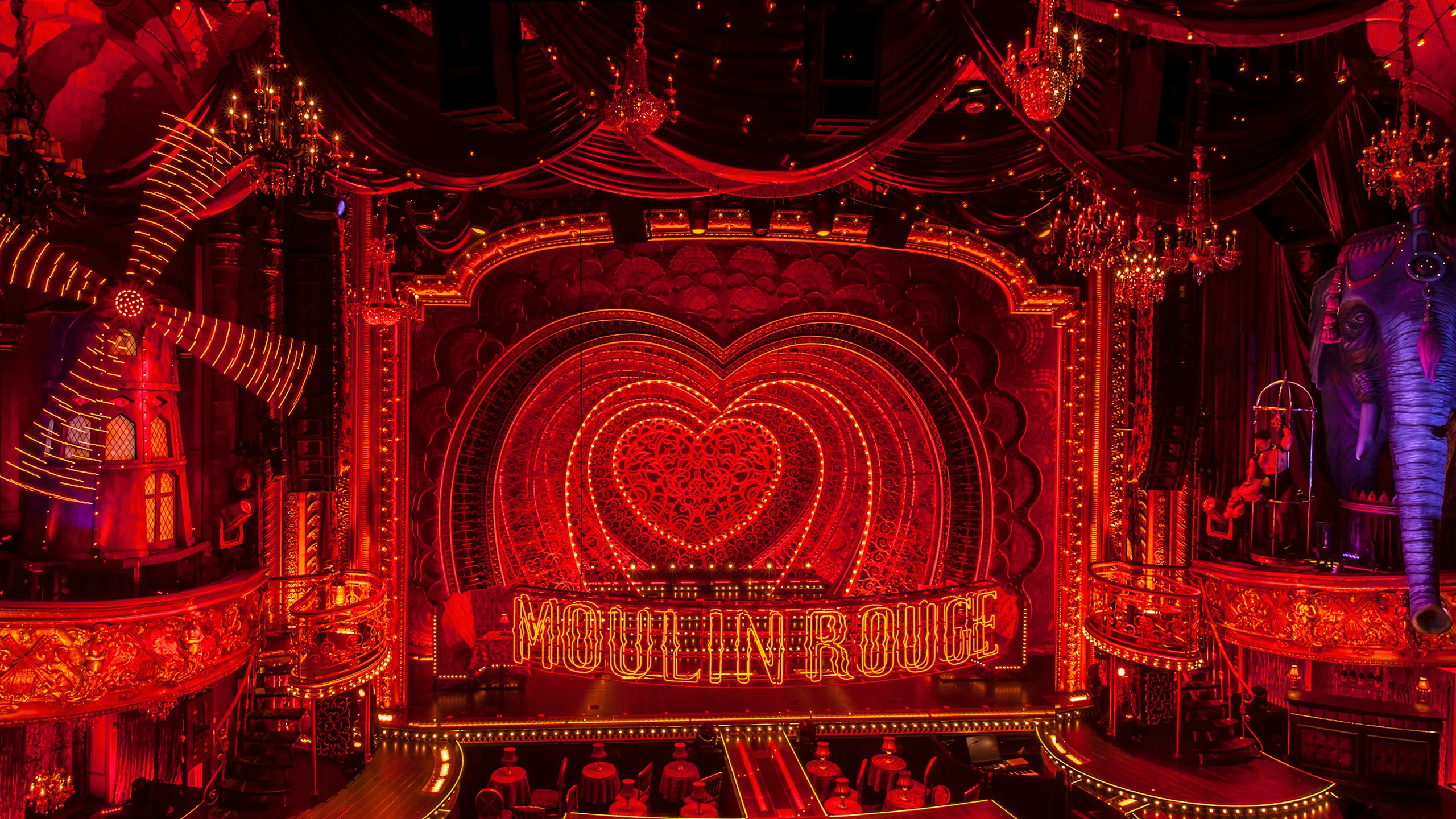
Enjoy a dazzling cabaret show at the legendary Moulin Rouge, the birthplace of the modern can-can dance. Located at the foot of Montmartre, this iconic venue has been entertaining audiences since 1889.
- The Show: The Moulin Rouge is famous for its extravagant performances featuring a talented troupe of dancers, stunning costumes adorned with feathers and rhinestones, and elaborate sets. Each show is a spectacle of music, dance, and acrobatics, offering a unique blend of tradition and modernity.
- Dinner and Show Packages: For a truly memorable evening, book a dinner and show package. Enjoy a gourmet meal of classic French cuisine before the performance, with options for every palate. The dining experience is enhanced by the elegant atmosphere and attentive service.
- Historical Significance: The Moulin Rouge has a rich history and has inspired countless artists, including Henri de Toulouse-Lautrec, who famously depicted the venue in his posters and paintings. A visit to the Moulin Rouge is not just an evening of entertainment but a step into Parisian cultural history.
10. Le Marais
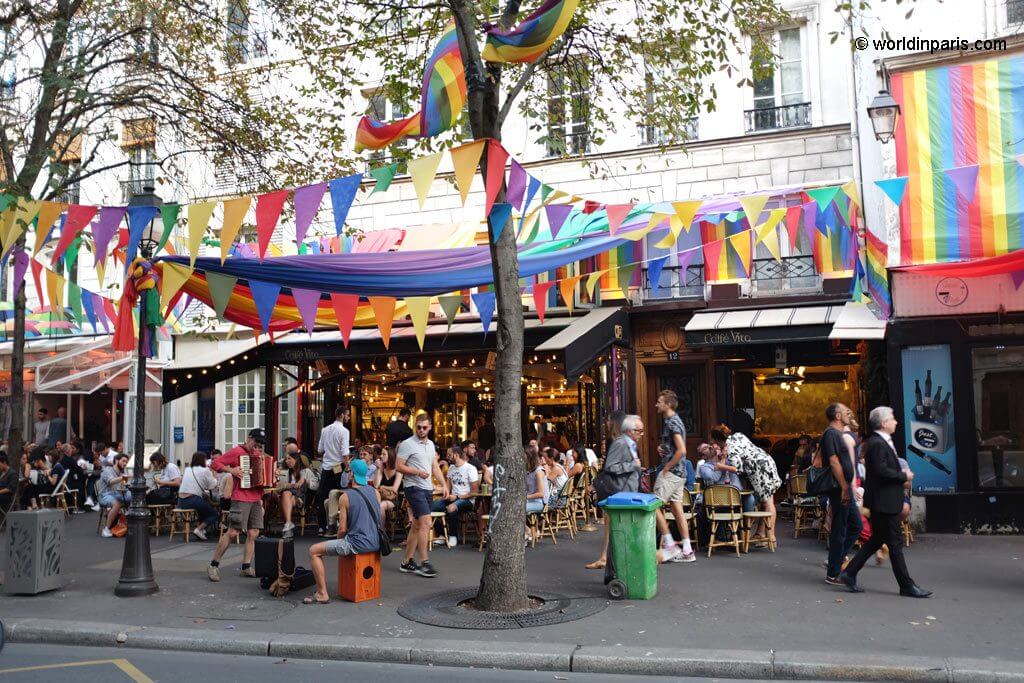
Discover the trendy Le Marais district, known for its historic buildings, chic boutiques, and vibrant nightlife. Located in the heart of Paris, Le Marais seamlessly blends old-world charm with contemporary flair.
- Historic Architecture: Le Marais is one of the oldest districts in Paris, with a wealth of historic architecture. Wander through its cobblestone streets and admire the beautifully preserved buildings from the Renaissance and medieval periods.
- Shopping and Dining: This district is a haven for shoppers and foodies. Explore a variety of boutiques offering everything from high fashion to vintage treasures. Le Marais is also home to a diverse array of cafes, bistros, and restaurants, serving both traditional French cuisine and international dishes.
- Cultural Highlights: Visit the Musée Carnavalet, dedicated to the history of Paris, and the Picasso Museum, which houses an extensive collection of the artist’s works. The Place des Vosges, the oldest planned square in Paris, is perfect for a leisurely stroll or a picnic.
- LGBTQ+ Friendly: Le Marais is known for its vibrant LGBTQ+ community and nightlife. The area boasts numerous bars, clubs, and events that contribute to its lively and inclusive atmosphere.
Also Read: Top 20 best things to do in Mexico City 2024
11. Musée d’Orsay
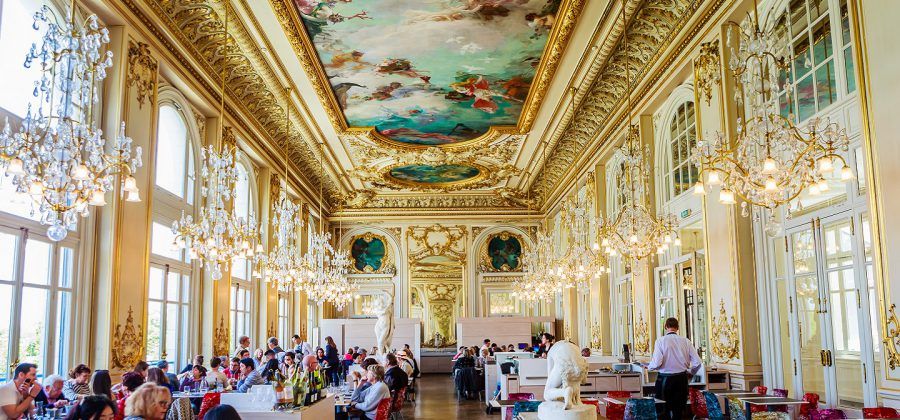
Visit the Musée d’Orsay, housed in a former railway station, to see an extensive collection of Impressionist and Post-Impressionist masterpieces. Located on the left bank of the Seine, this museum is a must-visit for art enthusiasts.
- Impressionist and Post-Impressionist Art: The Musée d’Orsay is renowned for its impressive collection of works by artists such as Monet, Degas, Renoir, Van Gogh, and Cézanne. These masterpieces highlight the revolutionary techniques and styles that defined the Impressionist and Post-Impressionist movements.
- The Building: The museum itself is a work of art. Originally built as the Gare d’Orsay railway station for the 1900 World’s Fair, its grand Beaux-Arts architecture provides a stunning backdrop for the art collection. The spacious, light-filled galleries offer a unique viewing experience.
- Special Exhibitions: In addition to its permanent collection, the Musée d’Orsay hosts temporary exhibitions that explore various themes and artists in greater depth. These exhibitions often feature rare and loaned works from other prestigious institutions.
- Sculptures and Decorative Arts: Beyond paintings, the museum boasts an extensive collection of sculptures and decorative arts, including Art Nouveau furniture and design. The eclectic mix of art forms ensures there’s something for every visitor to enjoy.
The Musée d’Orsay’s rich collection and beautiful setting make it a highlight of any trip to Paris.
12. Luxembourg Gardens
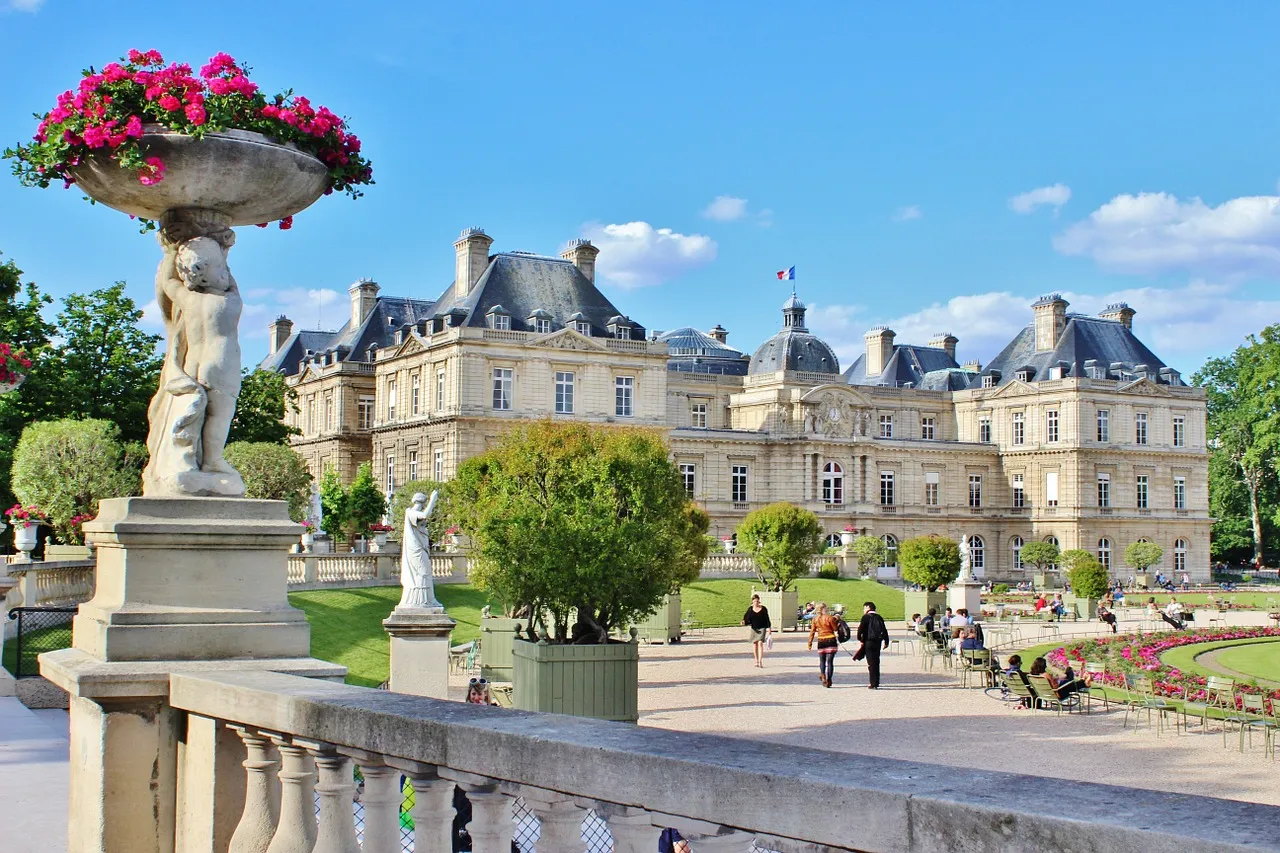
Relax in the beautiful Luxembourg Gardens, a green oasis in the heart of Paris. Commissioned by Marie de’ Medici in the 17th century, these gardens offer a perfect escape from the hustle and bustle of the city.
- The Gardens: Spanning over 25 hectares, the Luxembourg Gardens are meticulously landscaped with flowerbeds, tree-lined promenades, and perfectly manicured lawns. The central feature is the large octagonal pond, known as the Grand Bassin, where children can rent and sail miniature boats.
- The Luxembourg Palace: Overlooking the gardens, the Luxembourg Palace is the seat of the French Senate. Though the palace itself is not open to the public, its impressive façade adds to the gardens’ grandeur.
- Statues and Fountains: The gardens are dotted with beautiful statues and fountains, including the famous Medici Fountain, a romantic grotto and basin that offers a tranquil spot for reflection. You’ll also find statues of French queens and other historical figures throughout the park.
- Activities and Amenities: The Luxembourg Gardens are a popular spot for picnics, leisurely walks, and outdoor activities. There’s a playground for children, tennis courts, and even a puppet theatre. Various cafes within the gardens offer refreshments and light meals.
13. Sainte-Chapelle
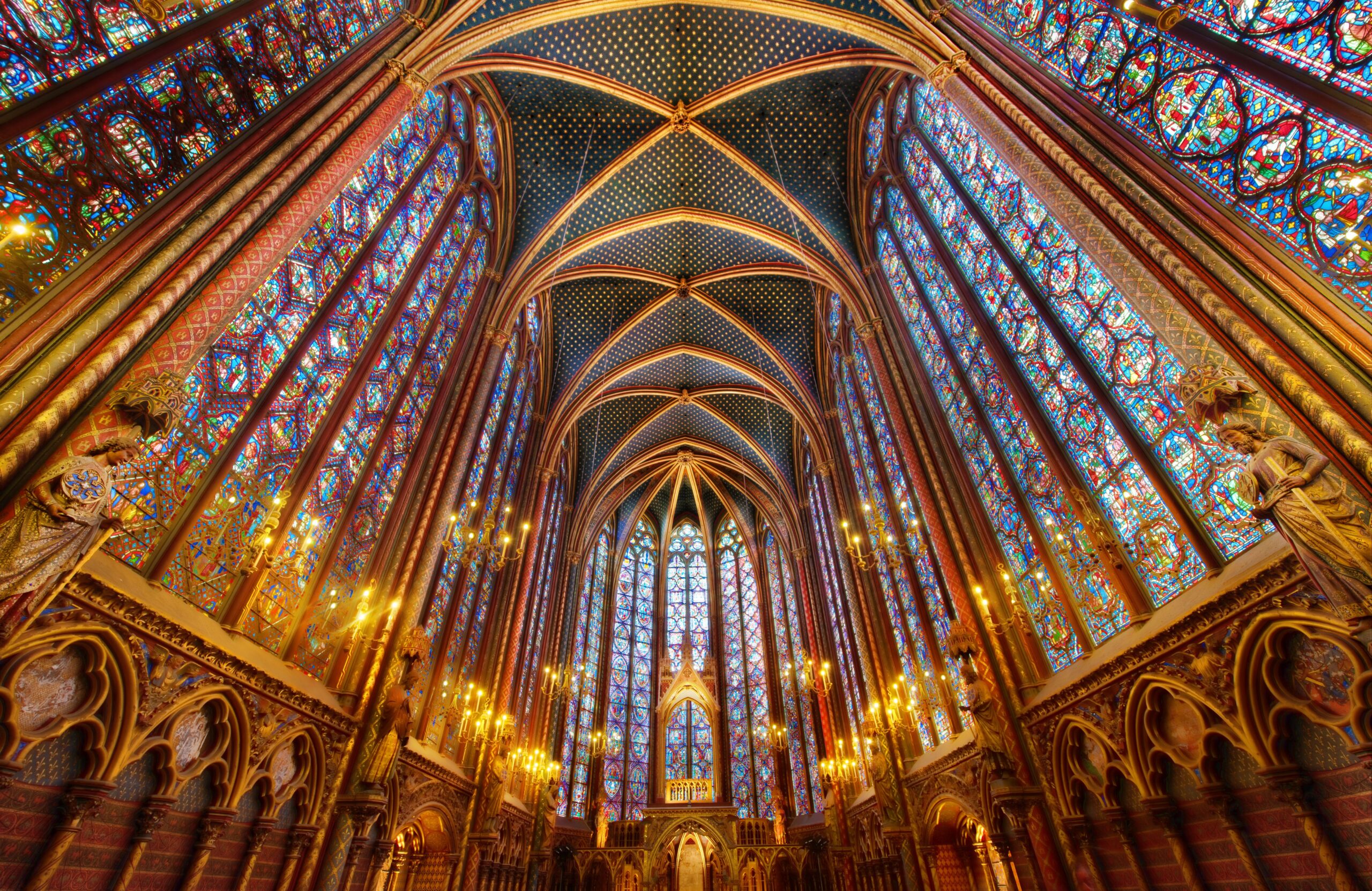
Admire the stunning stained glass windows of Sainte-Chapelle, a Gothic masterpiece located on the Île de la Cité. Built in the 13th century by King Louis IX, this chapel was intended to house precious Christian relics, including the Crown of Thorns.
- Upper Chapel: The upper chapel is the highlight of Sainte-Chapelle, featuring 15 magnificent stained glass windows that depict over 1,000 scenes from the Bible. These windows, which rise nearly 15 meters high, create a breathtaking kaleidoscope of colors when sunlight streams through them.
- Lower Chapel: The lower chapel, originally used by the palace staff, is dedicated to the Virgin Mary. It features a stunning vaulted ceiling painted with fleur-de-lis and a statue of Louis IX. Though less grand than the upper chapel, it is equally beautiful and serene.
- Relics and History: Sainte-Chapelle was constructed to house significant Christian relics acquired by Louis IX. While most of these relics were moved to Notre-Dame during the French Revolution, the chapel remains a testament to the piety and artistic vision of its creator.
14. Opera Garnier
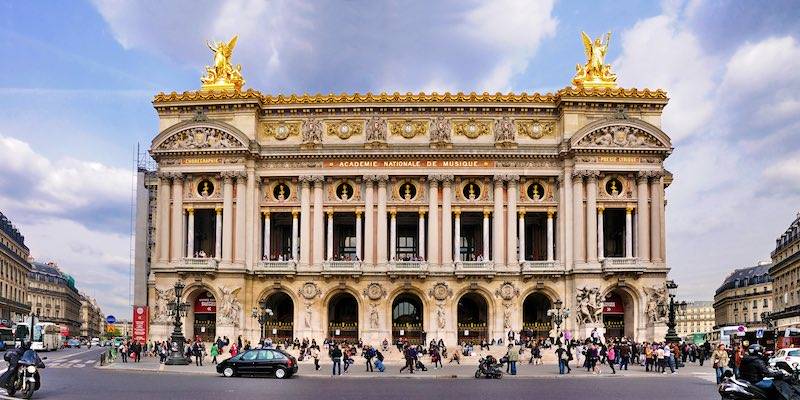
Take a guided tour of the Opera Garnier, an architectural gem that inspired The Phantom of the Opera. This opulent opera house, designed by Charles Garnier and completed in 1875, is a prime example of Beaux-Arts architecture.
- Grand Staircase: The Grand Staircase is one of the most iconic features of the Opera Garnier. This marble staircase, flanked by ornate sculptures and candelabras, leads up to the various levels of the opera house. It’s a popular spot for photographs and offers a taste of the building’s grandeur.
- Auditorium: The lavish auditorium, with its red velvet seats and gilded balconies, can accommodate nearly 2,000 spectators. The ceiling, painted by Marc Chagall in 1964, is a modern addition that contrasts beautifully with the historic decor.
- Foyer and Salons: The Grand Foyer, with its glittering chandeliers and gilded mirrors, resembles a palace hall. It’s a place where patrons gather during intermissions to socialize and enjoy the opulent surroundings. The adjacent salons are equally luxurious, each with unique decorative themes.
- The Phantom of the Opera: The Opera Garnier is famously associated with Gaston Leroux’s novel, The Phantom of the Opera. The building’s mysterious underground lake and grand architecture served as inspiration for this classic tale, adding to its allure and mystique.
15. Le Bon Marché
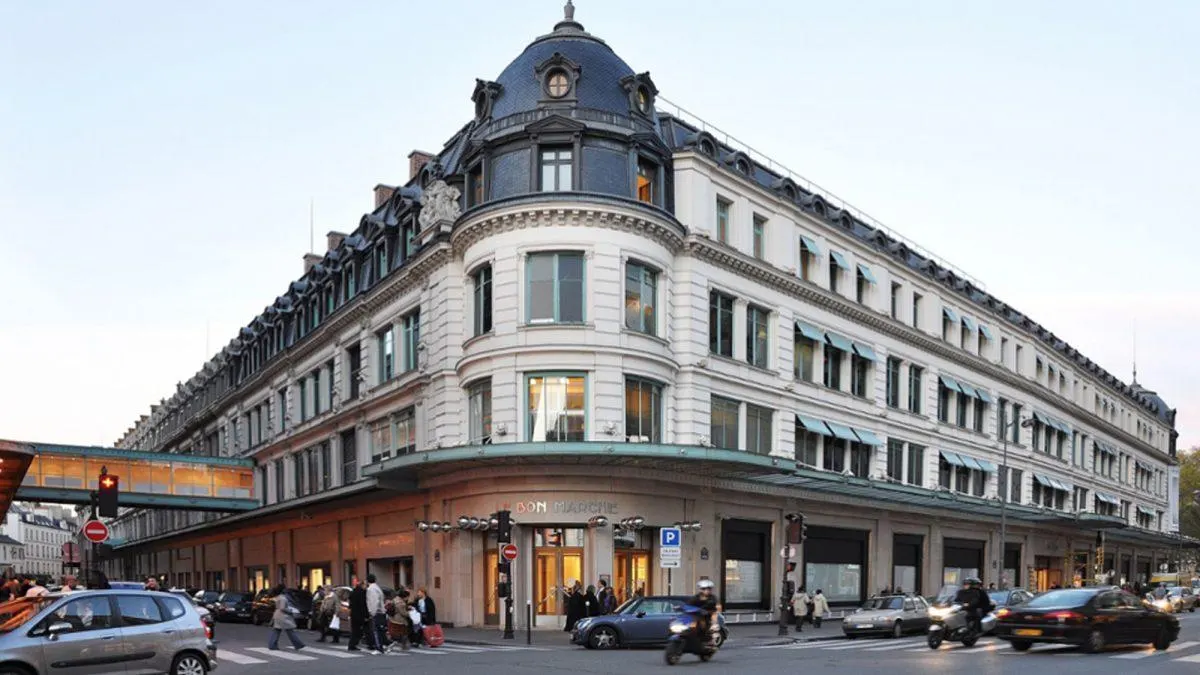
Shop at Le Bon Marché, Paris’ first department store, for high-end fashion, gourmet food, and more. Established in 1852, Le Bon Marché revolutionized retail by offering a wide variety of goods under one roof.
- Fashion and Accessories: Le Bon Marché is a fashion lover’s paradise, featuring an extensive selection of designer clothing, shoes, and accessories. You’ll find brands like Chanel, Louis Vuitton, and Dior, alongside emerging designers and exclusive collections.
- Beauty and Wellness: The beauty department offers a curated selection of luxury skincare, cosmetics, and fragrances. Expert consultants are available to provide personalized advice and recommendations.
- Home and Lifestyle: From chic home decor to innovative kitchen gadgets, Le Bon Marché’s home section has something for every taste. The store also features a dedicated area for books, stationery, and unique gifts.
- La Grande Épicerie de Paris: Located next to Le Bon Marché, La Grande Épicerie is a gourmet food market that offers a vast array of high-quality products. From fresh produce and artisanal cheeses to fine wines and pastries, it’s a foodie’s dream come true. Don’t miss the opportunity to sample and purchase some of the best culinary delights Paris has to offer.
Le Bon Marché’s blend of luxury, history, and modernity makes it a must-visit destination for shoppers in Paris.
Also Read: 20 THINGS TO DO IN ICELAND IN 2024
16. Pont Alexandre III
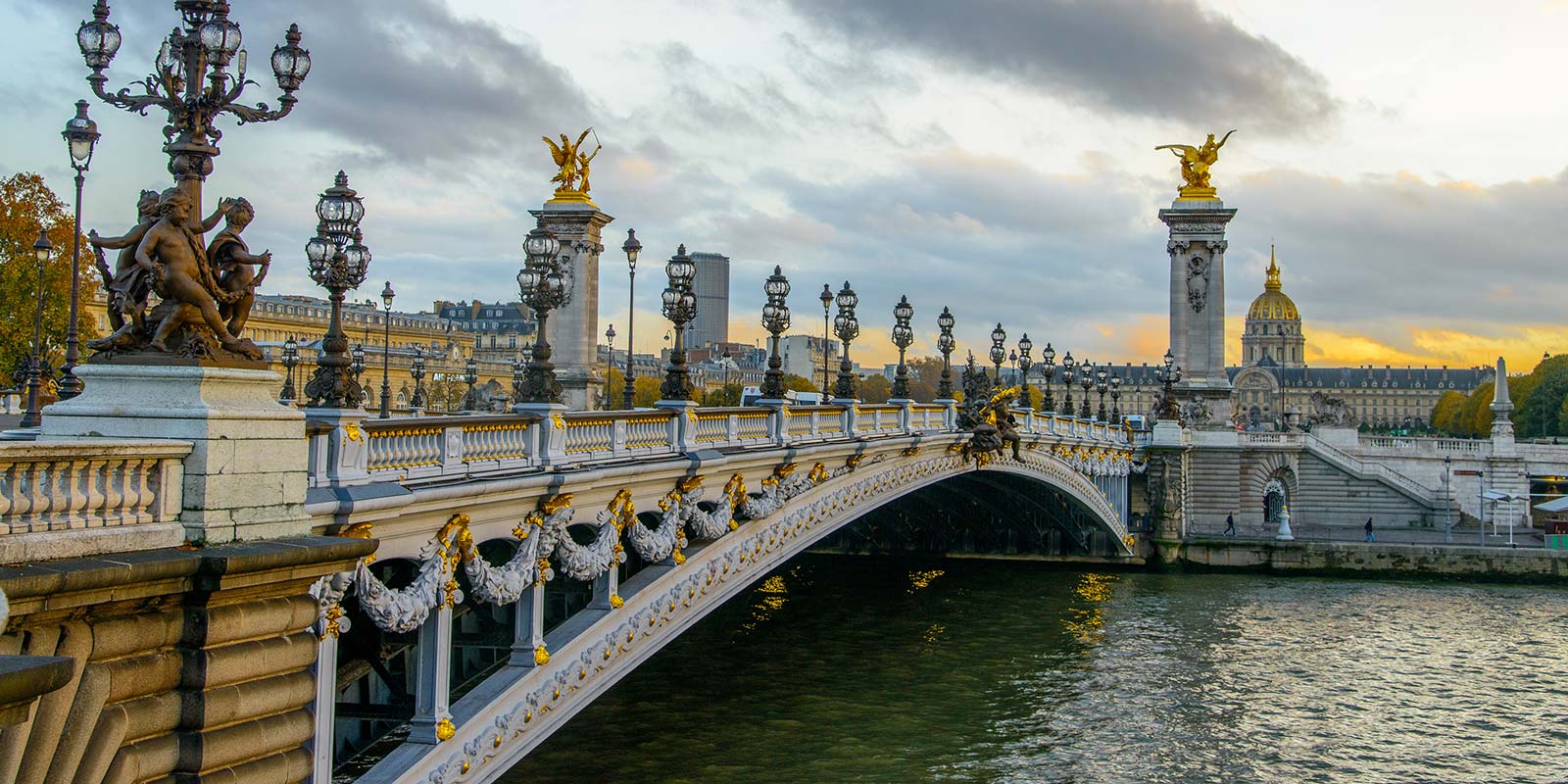
Take a walk across the Pont Alexandre III, one of the most ornate and beautifully decorated bridges in Paris. Spanning the Seine and connecting the Champs-Élysées quarter with the Invalides and Eiffel Tower, this bridge is a masterpiece of Beaux-Arts architecture.
- Design and Architecture: The bridge is adorned with exuberant Art Nouveau lamps, cherubs, nymphs, and winged horses. Each end of the bridge is anchored by massive columns topped with gilded statues, representing France’s arts, sciences, commerce, and industry.
- Views: From the bridge, you can enjoy stunning views of the Seine River, the Eiffel Tower, and the surrounding historic buildings. It’s a perfect spot for photography, especially at sunset when the golden light enhances the beauty of the cityscape.
- Historical Significance: Named after Tsar Alexander III of Russia, the bridge symbolizes Franco-Russian friendship and was inaugurated for the 1900 Exposition Universelle (World’s Fair). Its grandeur reflects the era’s optimism and architectural ambition.
17. Les Invalides
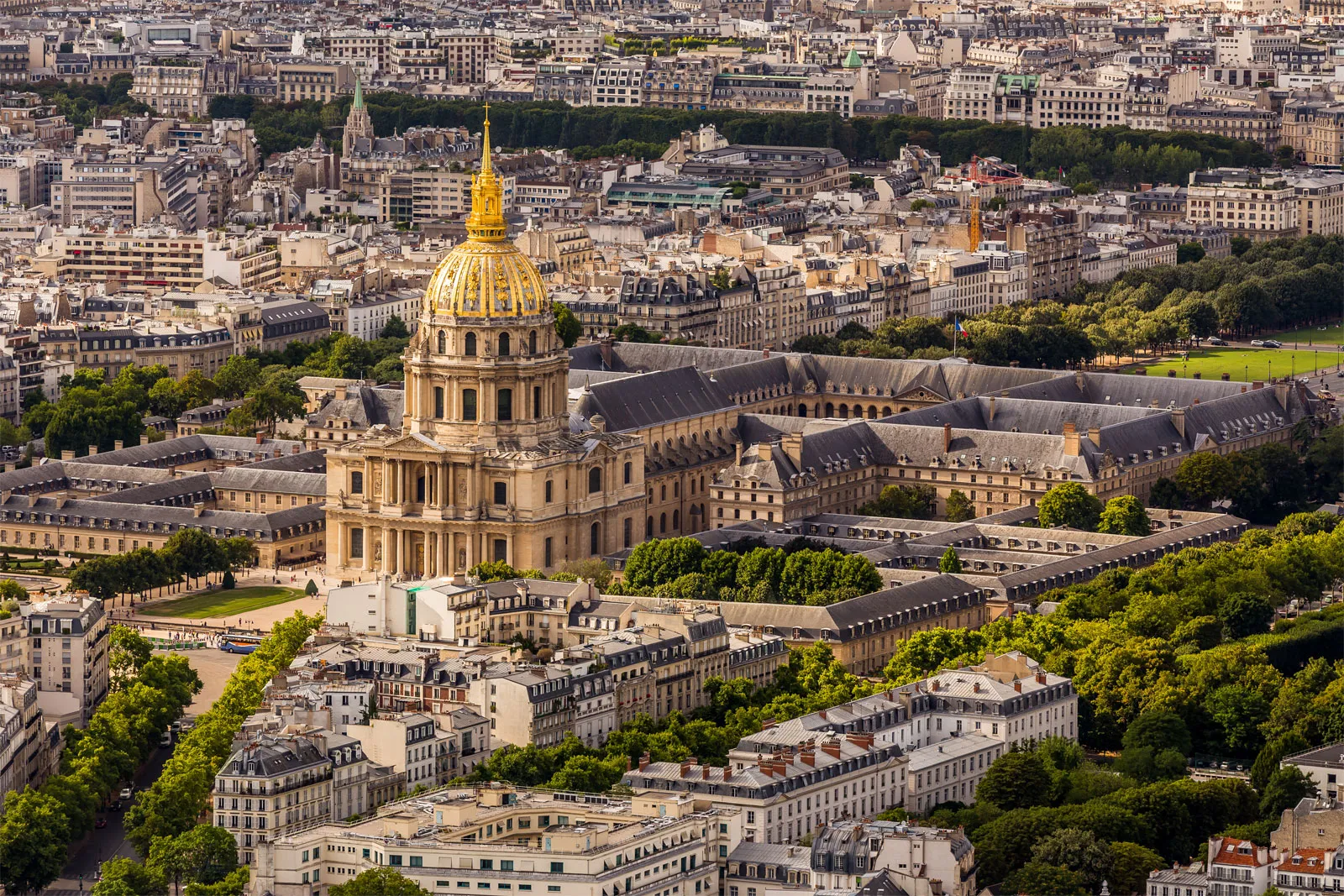
Explore Les Invalides, a complex of buildings in Paris containing museums and monuments related to France’s military history, as well as the burial site of Napoleon Bonaparte.
- The Dome: The Dôme des Invalides is a stunning example of French Baroque architecture and serves as Napoleon Bonaparte’s final resting place. The gold-plated dome is visible from many parts of Paris and houses a grand mausoleum where Napoleon lies in a red quartzite sarcophagus.
- Military Museum: The Musée de l’Armée, located within Les Invalides, is one of the largest military museums in the world. It displays an extensive collection of weapons, armor, uniforms, and military artifacts spanning from ancient times to World War II.
- Church of Saint-Louis: Also known as the Soldiers’ Church, this part of Les Invalides was built for the use of the veterans residing at the complex. It now serves as a burial site for notable military figures and features beautiful baroque architecture.
- Gardens and Grounds: The grounds of Les Invalides are meticulously maintained and offer a peaceful place to stroll. Statues, cannons, and historical displays are scattered throughout the area, adding to its historical ambiance.
18. Père Lachaise Cemetery
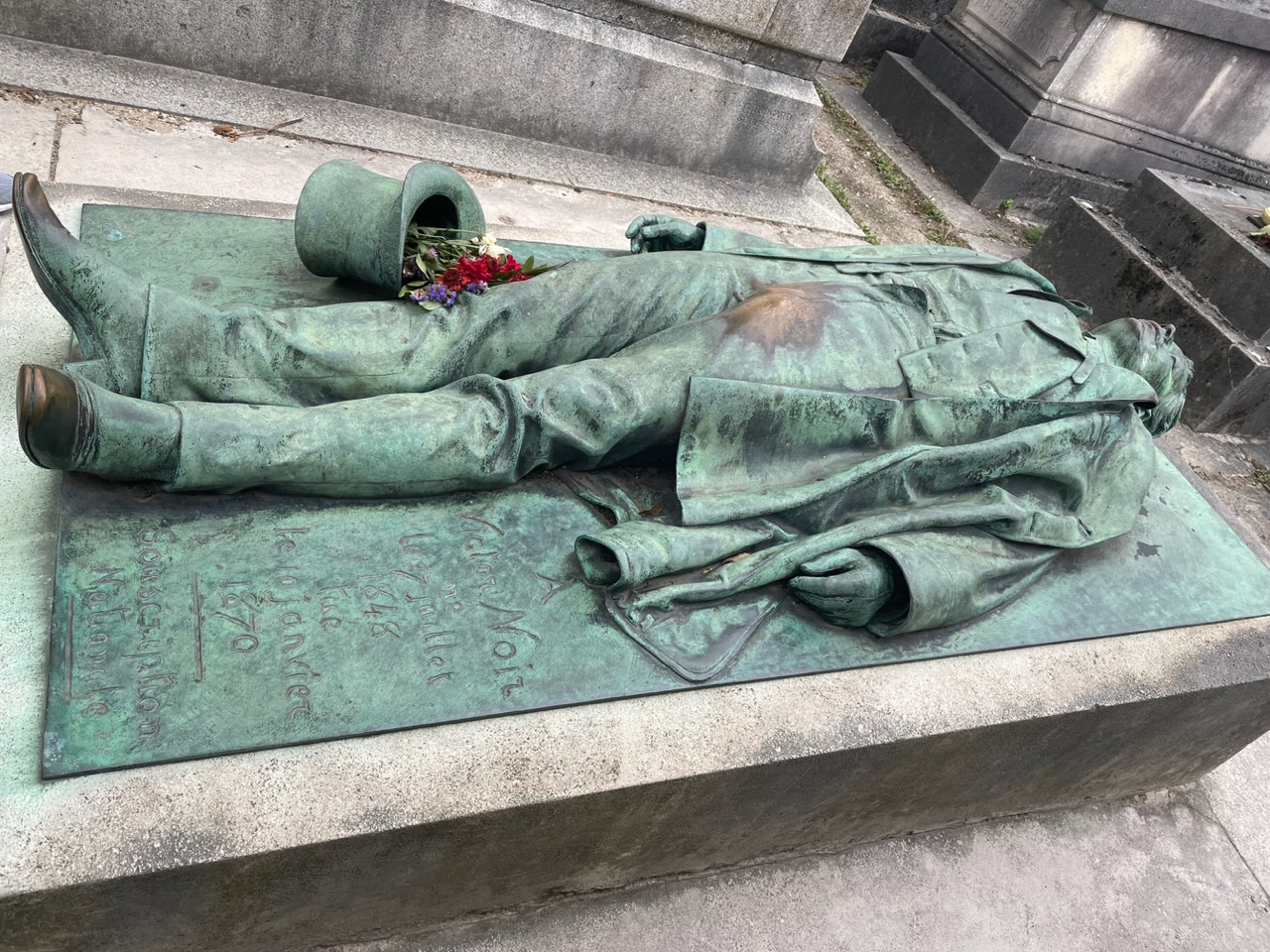
Visit Père Lachaise Cemetery, the largest cemetery in Paris and the final resting place of many famous figures. Established in 1804, it’s not just a burial ground but also a beautiful and tranquil park.
- Famous Graves: Père Lachaise is known for the graves of numerous famous personalities, including Oscar Wilde, Jim Morrison, Edith Piaf, Marcel Proust, and Frédéric Chopin. Each grave has its own unique character, often adorned with tributes and mementos left by admirers.
- Art and Sculpture: The cemetery is also an open-air museum of funerary art, featuring elaborate tombs, mausoleums, and sculptures created by renowned artists. Walking through its winding paths, you’ll encounter stunning examples of 19th and 20th-century funerary architecture and sculpture.
- Peaceful Atmosphere: Despite being a popular tourist attraction, Père Lachaise retains a serene and contemplative atmosphere. It’s a place where history, art, and nature converge, making it a unique spot for reflection and exploration.
19. Orangerie Museum
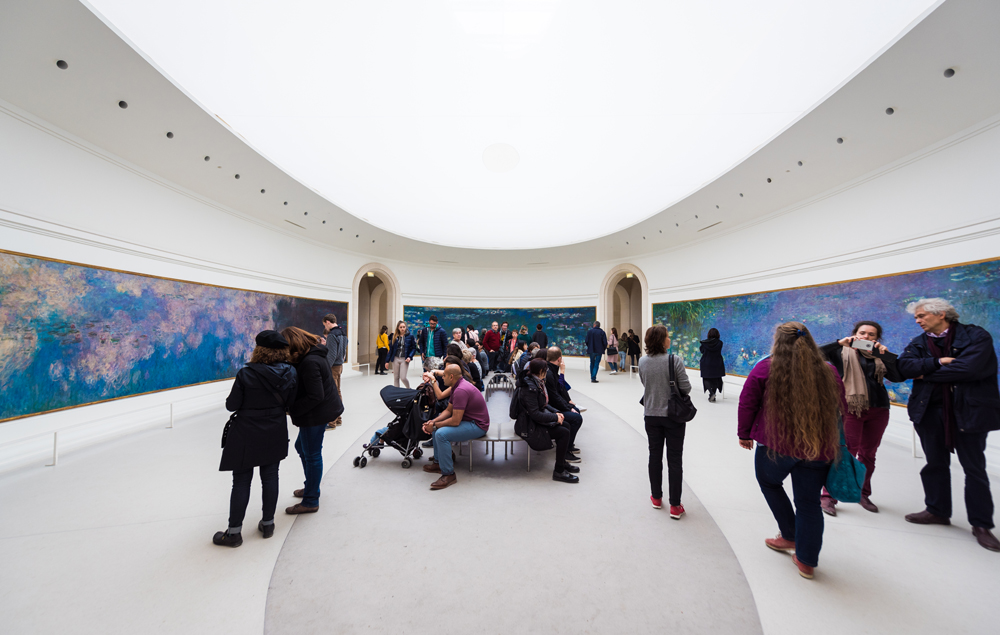
Marvel at Monet’s Water Lilies and other Impressionist works at the Orangerie Museum, located in the Tuileries Garden. This museum is renowned for its collection of Impressionist and Post-Impressionist paintings.
- Monet’s Water Lilies: The highlight of the Orangerie is the series of Water Lilies murals by Claude Monet. Displayed in two oval rooms designed to enhance the viewing experience, these large-scale paintings create an immersive, tranquil environment that captures the changing light and reflections of Monet’s garden in Giverny.
- Other Collections: The museum also houses an impressive collection of works by artists such as Renoir, Cézanne, Matisse, Picasso, and Modigliani. These pieces are part of the Walter-Guillaume collection, which focuses on the early 20th-century artistic movements.
- Location and Setting: Situated at the west end of the Tuileries Garden, the Orangerie offers a peaceful retreat from the bustling city. The museum’s setting in a historic orangery building adds to its charm and provides a fitting backdrop for its beautiful art collection.
20. Rodin Museum
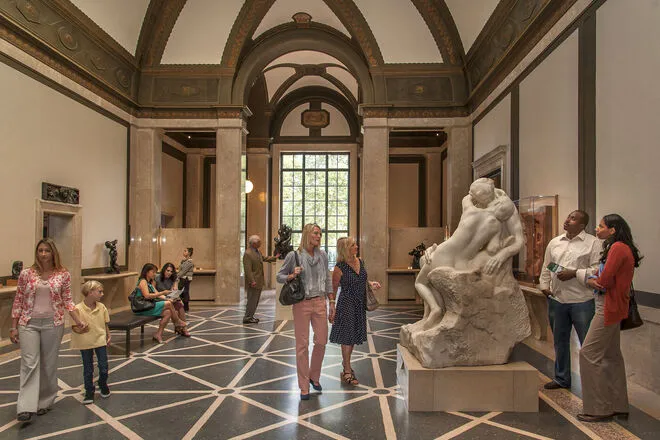
Discover the works of Auguste Rodin at the Rodin Museum, housed in a charming 18th-century mansion, the Hôtel Biron. This museum showcases Rodin’s sculptures, drawings, and other works, set in a tranquil garden.
- The Sculpture Garden: The museum’s garden is an integral part of the experience, featuring many of Rodin’s famous sculptures, including “The Thinker,” “The Gates of Hell,” and “The Burghers of Calais.” The beautifully landscaped grounds with their fountains, rose gardens, and shaded paths offer a serene setting to enjoy these masterpieces.
- The Hôtel Biron: The elegant mansion itself is a work of art, with its grand rooms and ornate decor. Inside, you’ll find Rodin’s sculptures, sketches, and personal collections displayed in a way that reflects his artistic process and development.
- Temporary Exhibitions: In addition to the permanent collection, the Rodin Museum hosts temporary exhibitions that explore various aspects of Rodin’s work and his influence on modern sculpture. These exhibitions often feature works by Rodin’s contemporaries and successors.
The Rodin Museum’s intimate setting and focus on one of France’s greatest sculptors make it a must-visit for art lovers.
Also Read: 10 things to do on a rainy day in the Lake District 2024
Paris is a city that promises unforgettable experiences, and with Star Vacations, you can make the most of your trip. From iconic landmarks to hidden gems, our personalized travel packages ensure that you experience the very best of Paris. Contact us today at 9352254235 to start planning your Parisian adventure!
